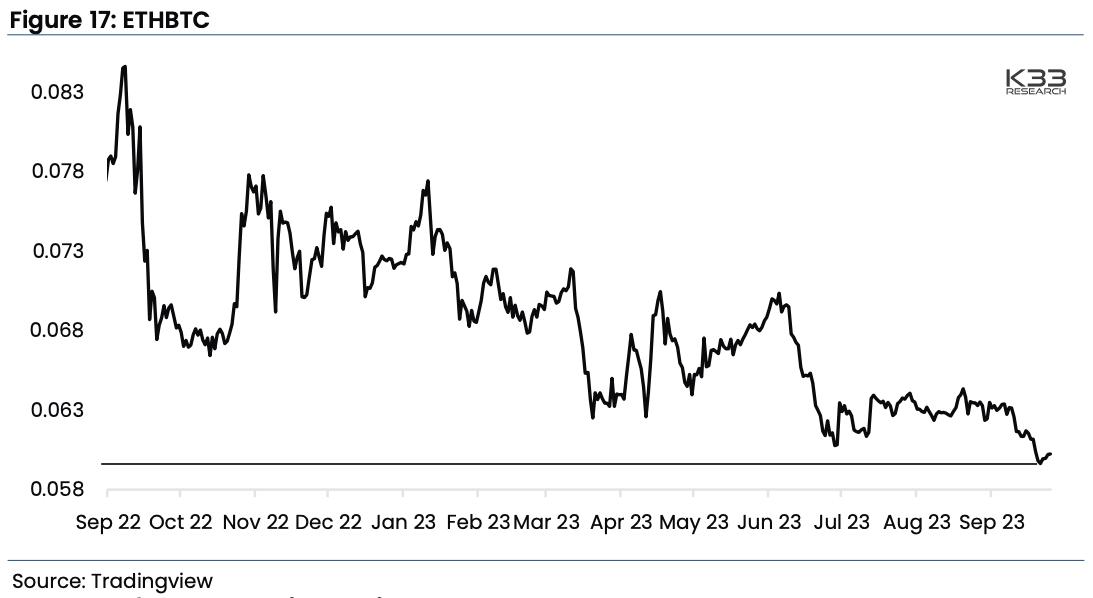Bitcoin And Ethereum Etf Performance Insights And Analysis
Kicking off with bitcoin and ethereum etf performance, this topic dives into the evolving landscape of cryptocurrency investments, particularly focusing on Exchange-Traded Funds (ETFs). These financial products provide a unique way for investors to gain exposure to the world of digital currencies like Bitcoin and Ethereum, while also navigating the volatility and risks associated with the crypto market.
The current market sees a growing interest in these ETFs, reflecting a blend of investor sentiment and regulatory developments that shape their performance. By examining various performance metrics, market factors, and future trends, we can gain a comprehensive understanding of how these assets are performing in today's financial environment.
Overview of Bitcoin and Ethereum ETFs
Exchange-Traded Funds (ETFs) have become a significant vehicle for investors looking to gain exposure to cryptocurrencies like Bitcoin and Ethereum. An ETF is a type of fund that is traded on stock exchanges, much like stocks. It holds assets such as stocks, commodities, or bonds and generally operates with an arbitrage mechanism that allows investors to buy and sell shares throughout the trading day.
The rise of cryptocurrency ETFs has opened doors for traditional investors to enter the crypto market with a sense of security and diversification.The historical context of Bitcoin and Ethereum ETFs illustrates a growing acceptance of cryptocurrencies in mainstream finance. Bitcoin ETFs have faced various regulatory hurdles, with numerous applications submitted to financial authorities over the years. Ethereum ETFs, on the other hand, have followed a similar trajectory, showcasing the evolving landscape of digital asset investment.
Currently, the market is witnessing a surge in interest, with several Bitcoin and Ethereum ETFs recently approved or in the pipeline, attracting both institutional and retail investors.
Performance Metrics of Bitcoin and Ethereum ETFs

Understanding the performance of Bitcoin and Ethereum ETFs requires familiarity with key performance indicators (KPIs) that gauge their effectiveness. Some vital metrics include:
- Net Asset Value (NAV): This represents the total value of the ETF's holdings divided by the number of outstanding shares, providing insight into the fund's market value.
- Tracking Error: This metric measures how closely the ETF's performance matches the performance of its underlying index or asset.
- Expense Ratio: The total fees charged by the ETF, expressed as a percentage of its average net assets, which can impact long-term returns.
When measuring performance, Bitcoin and Ethereum ETFs can be analyzed based on their price movements relative to Bitcoin and Ethereum prices. Comparative statistics over the past year reveal that Bitcoin ETFs have generally outperformed Ethereum ETFs in terms of price appreciation, but Ethereum ETFs have shown greater volatility and potential for higher returns during bullish market conditions.
Factors Influencing ETF Performance

Several market trends and external factors significantly impact the performance of Bitcoin and Ethereum ETFs. Notable influences include:
- Market Trends: The overall sentiment in the cryptocurrency market can drive prices up or down, affecting ETF performance.
- Regulatory Changes: Announcements regarding regulations can create uncertainty or optimism, influencing investor behavior toward ETFs.
- Investor Sentiment: The collective mood of investors, driven by news events or market analysis, can lead to significant buying or selling pressure.
These factors create a complex environment for ETF performance, requiring investors to stay informed and adaptable.
Risk Assessment of Bitcoin and Ethereum ETFs
Investing in Bitcoin and Ethereum ETFs is not without risks. Key risks include:
- Market Volatility: The cryptocurrency market is notorious for its price fluctuations, which can lead to sharp declines in ETF values.
- Regulatory Risks: Changes in regulation can impact the legality and operational aspects of ETFs, affecting their performance.
- Historical Downturns: Past market corrections have shown how quickly investor sentiment can shift, leading to rapid declines in ETF prices.
A detailed analysis of historical downturns reveals that significant drops in Bitcoin and Ethereum prices often correlate with drops in ETF values, underscoring the importance of risk management for investors.
Comparison of Bitcoin and Ethereum ETF Products
A comparative analysis of Bitcoin and Ethereum ETF offerings can help investors make informed decisions. The following table summarizes key aspects of various ETFs:
| ETF Name | Type | Expense Ratio | Assets Under Management (AUM) |
|---|---|---|---|
| Bitcoin ETF A | Bitcoin | 0.95% | $1 billion |
| Ethereum ETF B | Ethereum | 1.00% | $500 million |
| Bitcoin ETF C | Bitcoin | 0.85% | $750 million |
Investment strategies differ significantly between Bitcoin and Ethereum ETFs. Bitcoin ETFs often focus on capital appreciation, while Ethereum ETFs may also emphasize smart contracts and decentralized finance applications. Management fees and associated costs play a crucial role in determining the net returns for investors.
Future Trends for Bitcoin and Ethereum ETFs
The cryptocurrency ETF market is poised for future developments, driven by increasing institutional interest and evolving regulatory landscapes. Predictions indicate that Bitcoin and Ethereum ETFs will see greater adoption, particularly as more financial products become available.Technological advancements, such as blockchain innovations and improved security measures, are expected to enhance ETF structures and investor confidence. As the market matures, ETFs may evolve to incorporate a broader range of digital assets, leading to diversified investment opportunities.
Investor Strategies for Bitcoin and Ethereum ETFs

A well-rounded investment strategy for Bitcoin ETFs should consider the following components:
- Long-Term Holding: Investors may choose to hold Bitcoin ETFs for extended periods to capitalize on potential price appreciation.
- Dollar-Cost Averaging: Regularly investing a fixed amount can mitigate the impact of volatility by averaging out purchase prices.
- Risk Diversification: Allocating a portion of the portfolio to Ethereum ETFs can reduce overall risk exposure.
For Ethereum ETFs, a detailed plan might include:
- Research and Analysis: Actively monitoring market trends and project developments is vital for making informed investment decisions.
- Utilizing Stop-Loss Orders: Implementing stop-loss orders can help protect against significant downturns in ETF prices.
Diversification options involving both Bitcoin and Ethereum ETFs allow for a balanced approach, enabling investors to leverage the strengths of both cryptocurrencies while minimizing risk.
Real-world Examples of Bitcoin and Ethereum ETF Performance
Case studies of successful Bitcoin ETF performance highlight the potential for significant returns. For instance, Bitcoin ETF A showed a consistent upward trend over the past year, outperforming the broader market during bullish phases.Similarly, Ethereum ETFs have demonstrated resilience in various market conditions. Reports indicate that Ethereum ETF B maintained solid performance during market corrections, outperforming many traditional assets.Testimonials from investors reflect positive experiences with Bitcoin and Ethereum ETFs, underscoring their appeal as alternative investment vehicles within diversified portfolios.
Final Wrap-Up
In summary, understanding bitcoin and ethereum etf performance is crucial for investors looking to navigate the complexities of cryptocurrency investments. As the market continues to evolve, keeping an eye on performance metrics, regulatory changes, and investor sentiment will be key to making informed investment decisions.
Essential Questionnaire
What are Bitcoin and Ethereum ETFs?
Bitcoin and Ethereum ETFs are investment funds that offer exposure to the price movements of these cryptocurrencies without requiring direct ownership of the digital assets.
How is the performance of Bitcoin and Ethereum ETFs measured?
The performance is typically measured using key indicators such as total return, expense ratios, and price tracking against the underlying cryptocurrency.
What factors influence the performance of these ETFs?
Performance can be influenced by market trends, regulatory changes, investor sentiment, and the overall volatility of the cryptocurrency market.
Are there risks associated with investing in these ETFs?
Yes, potential risks include market volatility, regulatory changes, and the possibility of underperformance compared to direct cryptocurrency investments.
What are some strategies for investing in Bitcoin and Ethereum ETFs?
Investors can adopt strategies such as dollar-cost averaging, diversification with other asset classes, or focusing on long-term growth potential.


